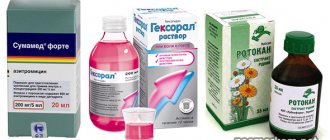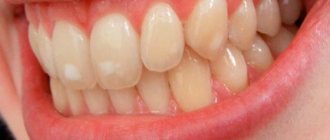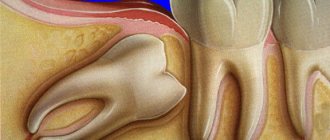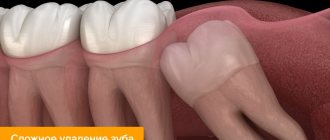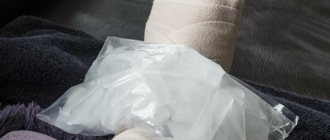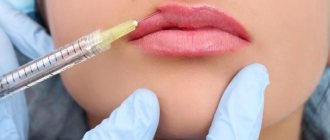Angioedema (other names: Quincke's edema, giant urticaria, acute angioedema) is trophoneurotic edema. The disease may be hereditary or acquired. It is characterized by the appearance of swelling of the subcutaneous fatty tissue and deep layers of the skin, including the mucous membranes of all organs and systems (digestive, respiratory, urinary, etc.). Angioedema may disappear within 72 hours.
The disease can have a hereditary form (about 25% of all cases). The idiopathic variant occurs in approximately 30%: in this case, it is not always possible to establish the true cause of the disease. In all remaining cases, Quincke's edema occurs with drug allergies, insect bites, food allergies, helminths and protozoa, autoimmune diseases and blood diseases.
In some cases, swelling is also called huge urticaria. According to statistics, Quincke's edema occurs in both adults and children, but in most cases the disease occurs in women at a young age. It is observed less frequently in older people and children. This problem occurs at least once in a lifetime in 10% of the population.
When a specific allergen enters the body, a strong allergic reaction occurs, in response to which Quincke's edema and other allergic diseases develop. Concomitant diseases may be bronchial asthma, food allergies, and the causes may be urticaria or hay fever, if they are not treated at the proper level.
In patients with pseudoallergic edema, the body can react quickly to the compliment system - in response to chemical or thermal irritations, which leads to the development of an allergic reaction of the body as a whole. In this case, consultation with an allergist will help make the correct diagnosis and decide on treatment.
How are angioedema classified?
Angioedema is divided into subgroups:
Based on the clinical picture:
- The course of the disease has: an acute period, which lasts up to 6 weeks, and a chronic period - more than 6 weeks;
- The disease can be combined with urticaria, or it can be isolated.
Various development mechanisms:
It can be hereditary or acquired.
Hereditary angioedema is always isolated and comes in three types:
- Type 1 – there is an absolute deficiency of the C1 inhibitor;
- Type 2 – there is a relative deficiency of the inhibitor in the body;
- Type 3 – no lack of inhibitor.
Acquired edema:
Acquired C1 inhibitor deficiency can be divided into the following types:
- absolute (isolated Quincke's edema).
- relative angioedema with the formation of autoantibodies to the inhibitor.
Idiopathic (may be combined).
Other mechanisms are involved in the development of the disease.
- May be associated with autoimmune diseases (may be combined).
- Isolated angioedema, which occurs under the influence of angiotensin-converting enzyme inhibitors.
- Quincke's edema can occur against the background of focal infection.
- Determined by hypersensitivity to various foods, medications, insect bites (often combined with urticaria).
What forms of angioedema exist?
HAE – hereditary angioedema
HAE (hereditary angioedema) is a dominant autosomal disease. It is characterized by the irregular occurrence of angioedema in any area of the body. This complement-dependent angioedema accounts for no more than 2% of all cases.
It is very important to diagnose the disease in a timely manner using a screening test. If the values are normal, the patient does not have HAE. This happens in 96% of cases: in this case, there is no need for further diagnosis.
Angioedema can be caused by ACE inhibitors: the disease develops from the first days of use and continues to worsen over several months of regular use of the drug. Foci of Quincke's edema can appear in the area of the tongue, lips, larynx, neck, and pharynx. In some cases, intestinal edema develops, without any special external manifestations on the skin and visible mucous membranes, but accompanied by abdominal pain.
Prevention of angioedema, which is caused by ACE inhibitors, consists of complete abstinence from taking all drugs of this class. Patients need consultation with an allergist; in addition, they must always have with them a bracelet or document informing them about the disease and the specifics of treatment.
PAO – acquired angioedema
Patients may also experience acquired C1 inhibitor deficiency. In this case, the clinical picture of the disease does not include a burdened hereditary history, and the disease begins to manifest itself after 40 years. Against the background of the immunodeficiency virus, acquired complement-dependent edema of lymphoproliferative diseases, multiple myeloma, chronic hepatitis B and C can occur. PAO often appears several years before the onset of the underlying disease.
What symptoms are characteristic of Quincke's edema?
The main symptom is limited and painless swelling of the mucous skin, the membrane of subcutaneous adipose tissue, which causes a feeling of distension of the skin. The disease can occur spontaneously or under the influence of triggers - provoking factors (stress, trauma, acute viral infection, surgery, alcohol, ACE inhibitors, estrogen drugs).
Quincke's edema can begin unexpectedly. Within a few minutes, swelling appears, with sharply defined borders of a pale color. The size of the swelling can vary: from a coin to a child’s palm; it can last for several hours and then disappear without a trace.
Quincke's edema often occurs in the area of the tongue, eyelids, lips, ears, soft palate, hands, feet, and genitals. Some people (no more than 25%) experience swelling of the trachea, larynx and large bronchi: it is characterized by hoarseness, a feeling of lack of air and a “barking cough”.
The patient experiences only skin tension in the area of edema: there are no other sensations, not even itching. But when pressed, a hole does not appear. Quincke's edema can occur with typical urticaria rashes. The appearance of edema in the bladder mucosa can lead to difficulty urinating, and in the intestinal mucosa - to abdominal pain.
Swelling of the trachea, pharynx, and larynx is the most dangerous and is observed in every fourth case. Characteristic features are: sudden anxiety, aphonia, difficulty breathing, hoarseness, and in some cases even loss of consciousness. During examination of the mucous membrane of the throat, swelling of the palatine arches and soft palate can be observed, the lumen of the pharynx narrows, and there may be a threat of acute lack of air - asphyxia. In this case, emergency medical intervention is required.
How can angioedema be diagnosed?
To clarify the diagnosis, it is important to consult an allergist, and an experienced immunologist will tell you what needs to be taken so that allergy treatment is systemic. It is imperative to identify the factors that provoke the onset of the disease. For example, you need to find a connection with taking some medications, foods, etc. This connection can be further confirmed using allergic skin tests.
It is necessary to evaluate a general blood test, urine test, determine functional activity and the level of C1 inhibitor, conduct allergy tests, clarify biochemical blood parameters, levels of C4, C1q and C2 components of the complement system. In this case, it is necessary to exclude intestinal diseases, autoimmune diseases, blood diseases, and conduct stool tests for helminths.
What is needed to treat angioedema?
Treatment of the hereditary form of angioedema is impossible without medications that are prescribed to enhance the body’s production of the missing inhibitor (currently not yet registered in Russia). The main task is to identify the root cause of the disease and eliminate it.
For treatment you can use:
- attenuated androgens;
- tranexamic acid;
- fibrinolysis inhibitors;
- fresh or fresh frozen aminocaproic plasma;
- various diuretics.
If the patient is diagnosed with idiopathic angioedema (with an unknown cause), it is necessary to use modern antihistamines for a long time. The choice of one of the antihistamine non-sedative drugs will be influenced by a consultation with an allergist, at which the patient’s individual characteristics and reaction to the new generation drugs will be determined.
The use of antileukotriene drugs may be necessary. If a severe course of the disease is initially diagnosed, it is necessary to use GCS, gradually reducing the dose to the minimum effective. If after using all of the above treatment methods there are no positive results, you can perform blood plasmapheresis, treatment with cyclosporine, use hydroxychloroquine, sulfasalazine, thyroxine, warfarin, methotrexate.
How to properly prevent the disease?
If the cause of angioedema is a drug or food allergy, you will need to consult an allergist, at which the specialist will recommend avoiding foods or medications that cause swelling.
All patients with HAE need to be treated for emerging foci of chronic infections, because with their exacerbation, the development of angioedema may occur. It is also advisable to exclude the use of oral contraceptives that contain estrogens, ACE inhibitors, including plasminogen activators.
Specialists at the Gorbakov Clinic advise following a strict diet (excluding all allergens), eliminating allergens from the patient’s environment, and taking preventative antihistamines during contact with various allergens or when plants are blooming.
Experienced allergists and immunologists at the Clinic will conduct professional diagnostics and prescribe adequate treatment, after which you can quickly and safely get rid of the symptoms of the disease and return to your usual way of life.
Quincke's edema is an allergic disease that is characterized by lightning-fast development and an increase in symptoms. Angioedema can affect any part of the body, which naturally causes significant inconvenience to patients. If you have ever experienced similar symptoms, or anyone in your family has suffered from angioedema, we recommend that you immediately seek advice from an allergist-immunologist, who will select the optimal course of treatment or recommend preventive measures.
Treatment
What measures need to be taken outside the acute phase of the disease?
First of all, it is necessary to completely eliminate the patient’s contact with the identified allergen.
Therapeutic measures are carried out in two stages: stopping the acute process, eliminating the causes of the disease.
- Short courses of hormones that temporarily “block” the immune system’s reactions.
- Drugs to strengthen the central nervous system (calcium, ascorbic acid).
- Vitamin complexes, Ascorutin to reduce vascular permeability, gammaglobulins.
- The use of histamine H1 receptor blockers (anti-allergic) to reduce sensitivity to the allergen and prevent subsequent histamine production.
Treatment of hereditary angioedema has a number of distinctive features. Incorrect diagnosis can cause death.
Symptoms of angioedema / Quincke's edema
Angioedema (other names: Quincke's edema, giant urticaria, acute angioedema) is trophoneurotic edema. The disease may be hereditary or acquired. It is characterized by the appearance of swelling of the subcutaneous fatty tissue and deep layers of the skin, including the mucous membranes of all organs and systems (digestive, respiratory, urinary and others). Angioedema may persist for 72 hours.
The disease can have a hereditary form (about 25% of all cases). The idiopathic variant occurs in approximately 30% of patients. In this case, it is not always possible to establish the true cause of the disease. In all remaining cases, Quincke's edema occurs when:
- drug allergies;
- insect bites;
- food allergies;
- helminths and protozoa;
- autoimmune diseases;
- blood diseases.
In some cases, swelling is also called huge urticaria. According to statistics, angioedema occurs in both adults and children, but in most cases the disease occurs in women at a young age. It occurs less frequently in older people and infants. This problem occurs at least once in a lifetime in 10% of the population.
When a specific allergen enters the body, a strong allergic reaction occurs, in response to which Quincke's edema develops. Concomitant diseases may include bronchial asthma and food allergies.
In patients with pseudoallergic edema, the body can react quickly to the compliment system - in response to chemical or thermal irritations, which leads to the development of an allergic reaction of the body as a whole. In this case, consultation with an allergist will help make the correct diagnosis and decide on treatment.
How are angioedema classified?
Angioedema is divided into the following subgroups.
Based on the clinical picture:
- The course of the disease has: an acute period, which lasts up to 6 weeks, and a chronic period - more than 6 weeks;
- The disease can be combined with urticaria, or it can be isolated.
Depending on the mechanisms of development of angioedema, it can be hereditary or acquired :
- Hereditary angioedema is always isolated and comes in three types:
- Type 1 – there is an absolute deficiency of the C1 inhibitor;
- Type 2 – there is a relative deficiency of the inhibitor in the body;
- Type 3 – no lack of inhibitor.
- absolute (isolated Quincke's edema).
- relative angioedema with the formation of autoantibodies to the inhibitor.
With the participation of other mechanisms:
- May be associated with autoimmune diseases.
- Isolated angioedema occurring under the influence of angiotensin-converting enzyme inhibitors.
- Quincke's edema due to focal infection.
- Determined by hypersensitivity to various foods, medications, insect bites (often combined with urticaria).
What forms of angioedema exist?
HAE (hereditary angioedema) is a dominant autosomal disease. It is characterized by the irregular occurrence of angioedema in any area of the body. This complement-dependent angioedema accounts for no more than 2% of all cases.
Angiotensin-converting enzyme inhibitors can cause angioedema: the disease develops from the first days of use and continues to worsen over several months of regular use of the drug. Foci of Quincke's edema can appear in the area of the tongue, lips, larynx, neck, and pharynx. In some cases, intestinal edema develops, without any special external manifestations on the skin and visible mucous membranes, but accompanied by abdominal pain.
Prevention of angioedema, which is caused by ACE inhibitors, consists of complete abstinence from taking all drugs of this class. Patients need consultation with an allergist; in addition, they must always have with them a bracelet or document informing them about the disease and the specifics of treatment.
Patients may also experience acquired C1 inhibitor deficiency – acquired angioedema (PAO). In this case, the clinical picture of the disease does not include a burdened hereditary history. Against the background of the immunodeficiency virus, acquired complement-dependent edema of lymphoproliferative diseases, multiple myeloma, chronic hepatitis B and C can occur. PAO often appears several years before the onset of the underlying disease.
What symptoms are characteristic of Quincke's edema?
The main symptom is limited and painless swelling of the mucous skin, the membrane of subcutaneous adipose tissue, which causes a feeling of distension of the skin. The disease can occur spontaneously or under the influence of triggers – provoking factors:
- stress;
- injuries;
- acute viral infection;
- surgical interventions;
- alcohol;
- ACE inhibitors;
- estrogen drugs.
Quincke's edema can begin unexpectedly. Within a few minutes, swelling appears, with sharply defined borders of a pale color. The size of the swelling can vary: from a coin to a child’s palm; it can last for several hours and then disappear without a trace.
Often with Quincke's edema, swelling occurs in the area of the tongue, eyelids, lips, ears, soft palate, hands, feet, and genitals. Some people (no more than 25%) experience swelling of the trachea, larynx and large bronchi: it is characterized by hoarseness, a feeling of lack of air and a “barking cough”.
The development of edema is most often not accompanied by itching, but sometimes, especially if the edema is associated with urticaria, itching may be the first sign and accompany the development of the allergic process. Quincke's edema can occur with typical urticaria rashes. The appearance of edema in the bladder mucosa can lead to difficulty urinating, and in the intestinal mucosa - to abdominal pain.
Swelling of the trachea, pharynx, and larynx is the most dangerous and is observed in every fourth case. Characteristic features are: sudden anxiety, aphonia, difficulty breathing, hoarseness, and in some cases even loss of consciousness. During examination of the mucous membrane of the throat, swelling of the palatine arches and soft palate can be observed, the lumen of the pharynx narrows, and there may be a threat of acute lack of air - asphyxia. In this case, emergency medical intervention is required.
Symptoms
Quincke's edema affects various tissues of the body and internal organs. Most often it appears on the face or neck, less often on the upper body or genitals. Sometimes swelling affects the joints and digestive tract when allergens come in from food and medications. Damage to the respiratory organs or membranes of the brain is especially dangerous. Such serious complications as increasing suffocation and cerebrovascular accident develop. They can be fatal.
The rate of development of Quincke's edema depends on the amount of the allergen, as well as the duration of its exposure. The condition develops within a few minutes, and sometimes hours or days. Quincke's edema, which persists for more than 6 weeks, is classified as chronic. The swollen area is dense. When you press on it, a hole does not form. There is slight pallor of the skin. The main difference from other allergic reactions is the absence of itching and rash. Associated symptoms include:
- decreased blood pressure;
- cardiopalmus;
- increased sweating;
- confusion;
- lack of coordination;
- feelings of anxiety and fear;
- speech problems.
Symptoms of swelling of the trachea, bronchi and larynx include a sore throat, barking cough, difficulty breathing, redness or bluishness of the skin. The gastrointestinal form of edema is manifested by pain in the abdomen, nausea, vomiting and diarrhea. With cerebral edema, headaches and numbness in the back of the head occur, and there is a fear of light and loud sounds. Convulsions, paralysis, blurred vision and speech, nausea and vomiting may occur.
Diagnosis of Quincke's edema / angioedema
To clarify the diagnosis, it is important to consult an allergist, and an experienced immunologist will tell you what needs to be taken so that allergy treatment is systemic. It is imperative to identify the factors that provoke the onset of the disease. For example, you need to find a connection with taking some medications, food, and so on. This connection can be further confirmed using allergic skin tests.
It is necessary to evaluate using special tests:
- general blood and urine analysis;
- determine the functional activity and level of C1 inhibitor;
- carry out allergy tests;
- to clarify biochemical blood parameters, levels of C4, C1q and C2 components of the complement system.
In this case, it is necessary to exclude intestinal diseases, autoimmune diseases, blood diseases, and conduct stool tests for helminths.
Causes of laryngeal edema.
In addition to knowing about the first signs of angioedema, you need to understand why, in principle, this dangerous condition can arise.
Typically, angioedema is of an allergic nature, but there are cases when the human body is affected not by allergens, but by other external factors.
The most common causes of angioedema of the larynx are:
- certain foods (for example, eggs, chocolate, etc.);
- plant pollen during the flowering period;
- fungi;
- household chemicals;
- taking medications;
- insect bites;
- dust;
- pet hair or excretions;
- exposure to open sun;
- hypothermia;
- stressful situations;
- digestive problems;
- heredity.
Treatment of Quincke's edema / angioedema
Treatment of the hereditary form of angioedema is impossible without medications that are prescribed to enhance the body’s production of the missing inhibitor (currently not yet registered in Russia). The main task is to identify the root cause of the disease and eliminate it.
To treat angioedema you can use:
- antihistamines;
- hormonal drugs;
- bronchodilators;
- attenuated androgens;
- tranexamic acid;
- fibrinolysis inhibitors;
- fresh or fresh frozen aminocaproic plasma;
- various diuretics.
If the patient is diagnosed with idiopathic angioedema (with an unknown cause), it is necessary to use modern antihistamines for a long time.
The use of antileukotriene drugs may be necessary. If a severe course of the disease is initially diagnosed, it is necessary to use glucocorticosteroids, gradually reducing the dose to the minimum effective. If after using all of the above treatment methods there are no positive results, you can perform blood plasmapheresis, treatment with cyclosporine, use hydroxychloroquine, sulfasalazine, thyroxine, warfarin, methotrexate.
How to properly prevent the disease?
If the cause of angioedema is a drug or food allergy, you will need to consult an allergist, at which the specialist will recommend avoiding foods or medications that cause swelling.
All patients with HAE need to be treated for emerging foci of chronic infections, because with their exacerbation, the development of angioedema may occur. It is also advisable to exclude the use of oral contraceptives that contain estrogens, angiotensin-converting enzyme (ACE) inhibitors, including plasminogen activators.
Specialists at the Gorbakov Clinic advise:
- follow a strict diet (exclude all allergens);
- eliminate allergens from the patient’s environment;
- carry out prophylactic intake of prescribed antihistamines during contact with various allergens or flowering plants.
Experienced allergists-immunologists of the Clinic will conduct professional diagnostics and prescribe adequate treatment, after which you can quickly and safely get rid of the symptoms of Quincke's edema and return to your usual way of life.
Causes
The main provoking factor for angioedema is the penetration of an allergen into the body. This could be a medicine, a food product, or a consequence of an insect bite.
The resulting acute allergic reaction with the release of inflammatory mediators increases the permeability of blood vessels located in the subcutaneous fat and submucosal layer. Local or widespread manifestation of edema begins. The disease can also develop with pseudo-allergy. That is, when there is increased sensitivity to certain medications, foods and supplements against a background of weakened immunity.
Another fairly common reason is the use of medications such as ACE inhibitors and angiotensin II receptor antagonists. Typical for older people.
The cause of Quincke's edema can also be a congenital or acquired deficiency of the C1 inhibitor, which controls many processes in the body (blood coagulation and fibrinolysis, kallikrein-kinin system, etc.).
Edema can develop in the following organs with certain symptoms:
- on the organs of the respiratory system, the larynx is especially often affected (hoarseness, difficulty breathing, severe cough, anxiety, bluish skin on the face, pallor, loss of consciousness);
- on the face, including lips, eyelids, cheeks;
- on the mucous membranes of the oral cavity (tonsils, soft palate, tongue);
- in the genitourinary tract (acute cystitis, urinary retention);
- in the brain (neurological disorders, seizures);
- in the digestive tract (“acute” abdomen, dyspeptic disorders, abdominal pain, increased peristalsis, the appearance of peritonitis).
The spread of angioedema can spread to the lower lip and affect the larynx, which can lead to suffocation. Swelling in the facial area can spread to the membranes of the brain. This development of the disease can lead to the death of a person if medical assistance is not provided in time.
2.What are the types of urticaria and Quincke's edema?
There are several different types of urticaria and angioedema:
- Acute urticaria and acute angioedema
. This is hives or swelling that lasts less than six weeks. The most common causes of this reaction in the body are food, drugs, latex or infections. Insect bites or some kind of internal disease are another cause of acute urticaria. When it comes to foods, the most common causes of hives are nuts, chocolate, fish, tomatoes, eggs, fresh berries, soy, wheat and milk. Especially if they are all consumed in their raw form. Medicines that may cause hives or angioedema include aspirin and other nonsteroidal anti-inflammatory drugs (such as ibuprofen), high blood pressure medications, or pain relievers (codeine). - Chronic urticaria or Quincke's edema
. In this case, the hives or swelling last for more than six weeks. Usually the causes of this type of urticaria are more difficult to determine than in the case of the acute form of the disease. In fact, the cause of chronic urticaria may be the same, but perhaps it is all due to an autoimmune disease, chronic infections, hormonal disorders or malignant neoplasms. - Physical urticaria
. This is a rash caused by direct physical impact on the skin. For example, from cold, heat, sunlight, vibration, pressure, sweating or exercise. In this case, hives usually appear in the area where the skin was directly exposed and rarely occur elsewhere. In most cases, physical hives go away within an hour of stopping exposure. Cold allergy is one of the most common forms of physical urticaria. - Dermatographism
is hives that appear when the skin is rubbed or scratched too hard. Such urticaria can begin simultaneously with other forms of this disease. - Hereditary angioedema
. This is a painful swelling of the tissue. The disease is inherited.
Visit our Allergology page

